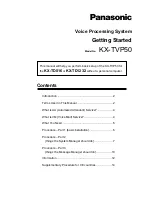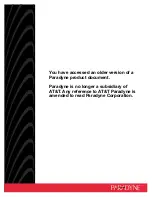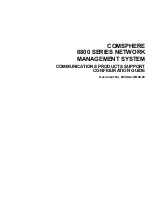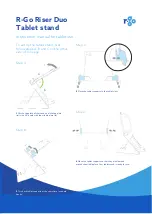
18
U S E R G U I D E
|
U V C S S I D E CU R E C O N V E Y O R
Definition of Terms
Brightness, also known as Luminance - description of energy in the visible region of the spectrum (approximately from 400 to
700 nm) and recorded in photometric units. “
Intensity
” (see below) of visible light energy is called Luminance.
Bulb - Light source generating ultraviolet, visible, and Infrared radiant energy from burning matter stimulated by electrical
power conditioned by a proper power supply which is an integral part of a lamp. A light source is usually placed into a reflector
(of various geometry) to increase light source efficiency by collecting and directing radiant energy of selected spectra (for a
given curing process).
Dose - Irradiance integrated over time, or Irradiance (W/cm
2
) x Time (s) = Dose (Joules/cm
2
). Watt is the power that gives
rise to the production of energy at the rate of 1-joule (J) per second(s).
Intensity - a measure of light energy over the unit of surface area (usually surface at the specified working distance from the
bottom of a reflector housing) in W/cm
2
or mW/cm
2
. For the UV portion of light, this measure is often called in literature
“irradiance”, i.e. radiant energy arriving at a point on a surface per unit area.
Luminance - luminous flux (energy
of visible light)
incident per unit area, and measured in Lx (lux) or Lumen/cm
2
.
OSHA
1910.145: “Regulation of Accident prevention Signs and Tags” de
fines the following
headers
as:
•
9B
WARNING
–
is used when there is a hazardous situation that has some probability of severe injury.
•
10B
CAUTION - is used to indicate a hazardous situation that may result in minor or moderate injury.
•
11B
NOTICE - is used to convey a message related directly or indirectly to the safety of personnel, or protection of
property.
•
Ozone - Oxidizing agent (O
3
) produced by the action of Ultraviolet radiant energy (below 185 nm) or electrical corona
discharge of oxygen on air.
Ultraviolet (UV) - The invisible region of the spectrum just beyond the violet end of the visible region. Wavelength ranges in
general from 1.0 nm to 400 nm. Dymax
Bulbs (burners) do not radiate energy in deep ultraviolet; there are very minute
amounts below 220 nm and practically nothing can be sensed below 200 nm. This is due to the use of an ozone blocking
quartz bulb envelope (See Ozone).
1.
Ultraviolet A (UV-A) - UV of long wavelength from within approximately 400 nm to 320 nm of the spectral band (4000
to 3200
) - predominately produced by Dymax flood lamps.
2.
Ultraviolet B (UV-B) - UV of medium wavelength from within approximately 320 nm to 280nm - Dymax flood lamps
produce some amount of their energy within this bandwidth.
3.
Ultraviolet C (UV-C) - UV of short wavelength below 280nm (we say from 280 nm to 200 nm)
–
a large amount of this
energy is present in the sunlight.
4.
Visible - Light that can be seen 400 nm - 700 nm.



































